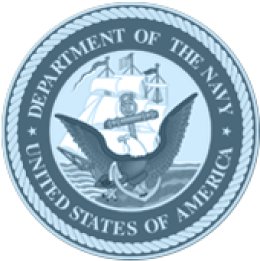Launching an MVP is only half the battle. The real test is turning that early product into a market-ready offering—fast—without burning through capital. Nearshore software development can be a strategic lever for startups: it compresses timelines, improves collaboration, and preserves runway while you validate product–market fit and scale. Here’s how.
Why speed matters after MVP
The MVP exists to validate hypotheses with the least investment possible. As HBR notes, MVPs are experiments to test assumptions about customers and business models—not mini versions of the final product. The teams that iterate fastest learn fastest. (Harvard Business Review)
Nearshore = faster feedback, fewer handoffs
For software, cycle time—and the frequency/quality of feedback—predicts delivery performance. The DORA/Google “Accelerate State of DevOps” research ties practices like rapid code review, frequent deployment, and short lead times to better organizational outcomes. Time-zone alignment and more synchronous collaboration make those practices easier to sustain. (Google Services)
Nearshore teams work in adjacent time zones, enabling real-time standups, pairing, and faster decisions. Forrester has documented a shift toward onshore/nearshore models precisely because modern development requires tighter, daily collaboration—coordination that’s harder with far-flung time zones. (Forrester)
From MVP to marketable product—what changes?
After an MVP proves promise, you typically need to:
- Harden the architecture (reliability, security, scale),
- Accelerate feature delivery to close gaps and win pilots,
- Instrument the product with analytics and observability, and
- Uplevel quality with automated testing and CI/CD.
A nearshore squad can run these workstreams in parallel with your core team during U.S. hours. The near-time overlap shortens feedback loops with product, design, and stakeholders—critical when every sprint must move the growth metrics.
Cost discipline without compromising talent
Cost arbitrage is not the only reason to nearshore—but it matters for runway. Deloitte’s latest outsourcing research shows firms are expanding multi-location sourcing to access skills at competitive cost while maintaining tighter governance over distributed teams. Nearshore fits this pattern: you retain collaboration intensity while lowering total cost of delivery. (Deloitte)
A practical blueprint: the first 90 days post-MVP
- Weeks 0–2: Stabilize and plan
• Audit the MVP (architecture, security, data): identify “must fix” vs. “can defer.”
• Set up metrics from DORA/Accelerate (lead time, deployment frequency, change failure rate, MTTR) so you can manage by outcomes, not outputs.
• Establish a single backlog and definition of done; wire CI/CD and trunk-based workflows. (Dora) - Weeks 2–6: Parallelize delivery
• Hardening track: Improve auth, error handling, performance, and reliability.
• Feature track: Ship the minimum set of marketable features to support pilots or early contracts.
• Quality track: Stand up automated tests (API/UI), smoke suites, and build gates to raise signal quality and reduce regressions. (The DevOps research consistently links automation + small batch changes to faster, safer delivery.) (Google Services) - Weeks 6–12: Scale and differentiate
• Add observability (logs, traces, dashboards) and product analytics to guide roadmap choices.
• Increase deployment frequency; keep batch size small to sustain fast learning.
• Formalize SLOs for key user journeys; use error budgets to balance speed and stability. (Again, these practices are associated with top-performing engineering orgs.) (Dora)
When nearshore teams shine
- Data migration & integration: Moving from MVP data hacks to production pipelines requires ETL/ELT, lineage, and governance. Nearshore specialists can implement modern stacks (e.g., ADF/Glue/Datastream, Warehouse/Lakehouse patterns) while collaborating live with your architects and PMs. Reduced handoff latency keeps cutovers on schedule. (Deloitte)
- Portal/app development: Tight loops with design and product are crucial for closing UX gaps uncovered in MVP trials. Nearshore enables daily design–dev QA cycles, so usability issues don’t linger across time zones. Forrester highlights this collaboration need as a driver for nearshore adoption. (Forrester)
- Dashboards & BI: Startups often lack reliable metrics after MVP. Building executive-ready dashboards (Power BI/Tableau) and embedding them into the product helps you manage growth by evidence—without waiting a day for a response window to open. (Deloitte)
- Cloud & infrastructure: IaC, pipelines, and monitoring let small teams ship with confidence. Nearshore DevOps engineers working in your workday can pair with developers to remove bottlenecks quickly, improving lead time and deployment frequency. (Dora)
- QA & testing: Manual-only testing won’t keep pace after MVP. Automated API/UI suites integrated into CI/CD raise signal quality and free developers to ship more often—an effect repeatedly observed in the DORA research. (Dora)
Governance that de-risks the model
Smart governance unlocks nearshore benefits without chaos: shared backlogs; transparent dashboards; clear service ownership; and SLAs around review time, deployment cadence, and defect escape rate. McKinsey suggests using a balanced productivity framework (beyond raw output) to sustain healthy performance—aligning process metrics with developer experience and business outcomes. (McKinsey & Company)
Bottom line
If your MVP shows promise, the next milestone is not months away—it’s the next sprint. Nearshore development gives startups the collaboration density of a co-located team with the cost advantages of distributed delivery. That combination helps you harden, differentiate, and ship faster—so you can turn validated ideas into real market traction.












